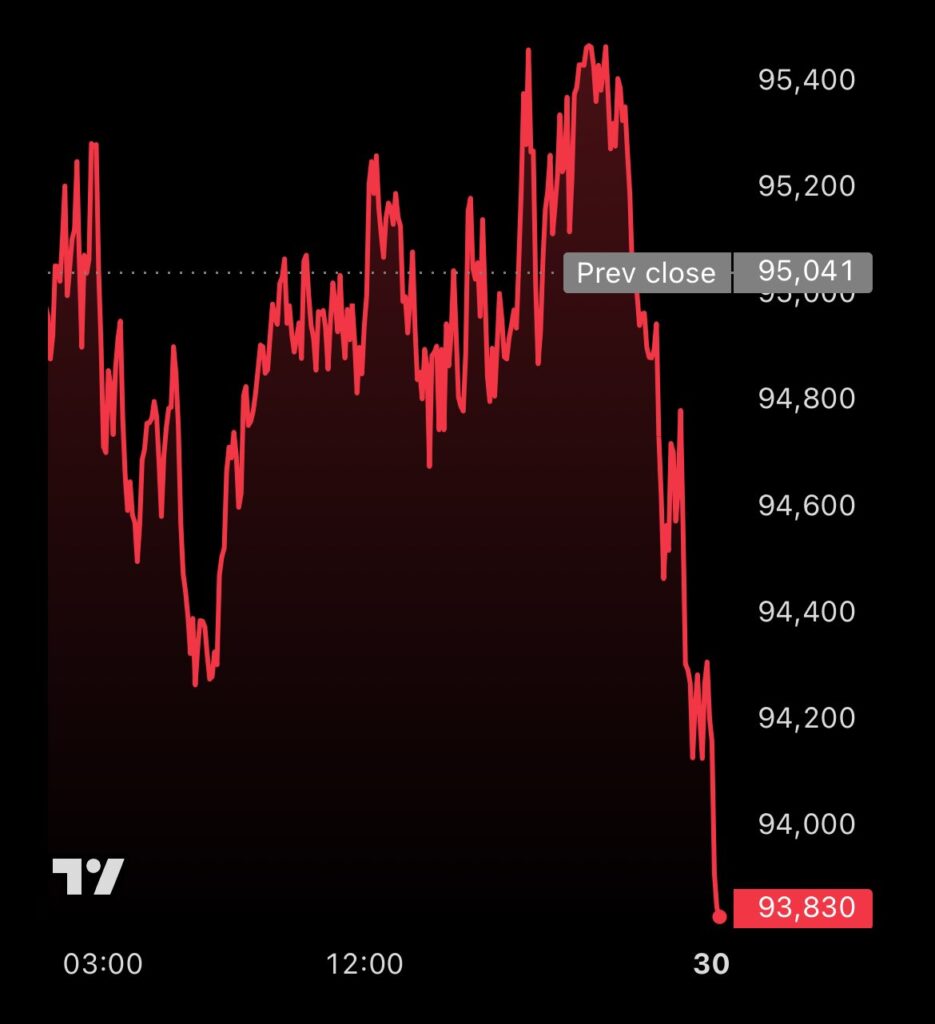Bitcoin climbed to an intraday high of $91,752.00 on Tuesday, closing at $91,605.01—a gain of over 5%—marking the cryptocurrency’s highest price point since March.
The digital asset has now surged more than 8% over the last 48 hours and is up 22% from its April low.
The latest rally comes amid financial turbulence across traditional markets. On Monday, U.S. equities fell sharply after former President Donald Trump publicly urged Federal Reserve Chair Jerome Powell to cut interest rate.
Though stocks rebounded slightly on Tuesday, investor sentiment remained cautious, and many are now turning to alternative stores of value such as Bitcoin.
Adding to the bullish sentiment, spot Bitcoin ETFs reported $381.4 million in net inflows on Monday—the highest since January 30 and the fourth such influx in just five sessions. The significant demand signals growing institutional confidence in Bitcoin’s long-term utility as a financial hedge.
“Bitcoin continues showing signs of resilience,” said Ed Engel of Compass Point. “Bitcoin’s correlation with equities historically approaches 1.0 during macro sell-offs; however, its 30-day correlation with the S&P is just 0.65.”

Engel further noted, “While we’re constructive on bitcoin’s recent decoupling, recent strength comes alongside light trading volumes… That said, bitcoin’s long-term holders remain steadfast and buying from Strategy is picking up as bitcoin’s liquidity declines.”
Technical analysts are also weighing in. Chart expert Katie Stockton observed that Bitcoin clearing the $88,000 resistance level is a bullish indicator, setting the stage for a potential test of $95,900 in the coming weeks.
Institutional Adoption Gains Ground Globally
Behind Bitcoin’s recent surge lies a deeper, systemic shift in how financial institutions and national governments are viewing the digital asset.
Bitcoin-focused investment firms such as Strategy continue to make significant strides. Since the start of 2025, Strategy has reportedly made over $5.1 billion in profit from its Bitcoin holdings. The company’s strategy has been pivotal in legitimizing the allocation of corporate treasuries into digital assets.
Michael Saylor, co-founder of Strategy, has remained vocal in promoting Bitcoin’s role in modern finance. Meanwhile, Adam Back, CEO of Blockstream and creator of Hashcash, praised these treasury movements as financially forward-thinking.
“Companies like Strategy are taking advantage of the gap between Bitcoin’s future potential and the current state of fiat money,” Back said. He called it a “logical and sustainable arbitrage” model scalable enough for large corporations to adopt Bitcoin as a treasury standard.
Across the globe, the trend is gaining traction in Asia. Metaplanet, dubbed “Asia’s MicroStrategy,” recently surpassed 5,000 BTC in holdings. The firm has set a target to acquire 21,000 BTC by 2026, positioning itself as a major institutional player in the region’s digital asset ecosystem.
Government Policy and Regulatory Winds Shift in Favor of Bitcoin
In the U.S., regulatory barriers are also beginning to ease. The Federal Reserve has reversed its 2022 guidance that discouraged American banks from engaging with cryptocurrencies.
In a historic development, President Trump recently signed an executive order authorizing the creation of a national Bitcoin reserve. The reserve will be backed by BTC seized in criminal investigations. This is the first time a major government has moved to establish a sovereign Bitcoin reserve, signaling a shift in how digital currencies are integrated into national financial policy.
Bitcoin’s resilience is also underscored by its performance compared to fiat currencies.
“Bitcoin’s price has been growing faster than traditional fiat currencies over four-year periods,” Adam Back noted, citing the cryptocurrency’s fixed supply and immunity to inflation as reasons for its growing global appeal.
As corporate giants, institutional investors, and governments increasingly add Bitcoin to their financial arsenals, many believe we are inching closer to a future where Bitcoin could rival or even replace traditional fiat currencies as a dominant global reserve asset.
Some financial projections now estimate that Bitcoin’s total market capitalization could eventually surpass $200 trillion, a scale that would redefine the very structure of global finance.
Like 👍, Comment, share this article, and Follow us on our social media handles.







